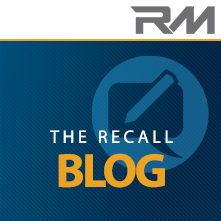Service Transparency Opens the Door to Better Retention
Service Transparency Opens the Door to Better Retention
A Blog Post by Sean Reyes, Chief Marketing Officer for Recall Masters
When 84% if consumer say that price transparency is lacking at most dealerships, we get a glimpse at one of the reasons why consumers are migrating to the aftermarket for vehicle repairs and servicing. In the KPA 2024 Dealership Trust Survey, results also revealed that 76% of Americans don’t trust that dealerships actually being honest about pricing. Let me clarify – the survey revolved around vehicle sales. However, does the average consumer separate the variable side of the business from the fixed operations side? Not likely. A dealership is a dealership, from their perspective. If the perception is that shady pricing tactics took place at sale of the vehicle, it runs parallel to how they view service. Dealers are now trying to combat this negative image with service transparency.
Service transparency isn’t new to the industry. Decades ago, consumers complained that service centers were charging for parts and labor that either wasn’t performed or didn’t need to be performed. Despite service lane video and other MPI processes, consumer attitude hasn’t changed for the better. In fact, consumer sentiment is more skeptical of dealers than pre-MPI days. How can this be that we made such a massive investment to capture on film repairs that the vehicle needed – all for the consumer’s benefit – and we’re still behind the eight ball?
We can’t blame video inspection platforms. By capturing and sharing videos with consumers, we invited them into the shop to see what our technicians see. Aside from the consumer standing right next to the technician, video MPI is the next best thing. However, we failed to recognize that customers who don’t trust us to begin with may also suspect that video MPI is tainted with heavy-handed upsell tactics. Even when we’re providing evidence that a repair is needed is evident, it usually comes without a better understanding of the priority, the cost and the concern that maybe one more dollar in repair is just beyond their means. In other words, it all smells like a sales event.
At Recall Masters, we’re safeguarding consumers from a dangerous recall, a life-saving event that comes at no cost to the consumer. All recall repairs are covered by the factory and can only be performed by an authorized franchise dealership of that brand. So, in the most literal sense, there’s no better way to invite consumers back to the dealership. Many of these vehicles are out-of-warranty and, more than likely, had already defected to the retail outlets and independent repair shops with no intent of returning to the dealership. A lot of these cars were acquired in the secondary market. These 2nd, 3rd, 4th generation owners may never had a relationship with the local franchise dealer, so dealers can leverage a recall incident to lure them into a dealership – defection from the aftermarket, if you will.
Just how easy is it to giveaway vehicle repair at no cost to the consumer? It’s not as easy as you think. Depending on the dealership and brand, response rates for our recall campaigns runs about 12 – 14%, which is huge compared to the 2% that OEMs receive. But the OEM is only required to mail out a notification one time, and only to the original owner. Depending on the age of the vehicle, it’s likely that the car is no longer in the possession of that original owner. Recall Masters is also coordinating multi-touchpoint campaign across multiple channels, all funneling into a centralized call center. I’m not trying to point out that we do it better. The point is to underscore that, despite this herculean effort to connect with owners, about 85% of them just don’t want to service at the dealership. It’s not about cost, obviously. It’s about convenience. And, as we’re discovering, it’s also about service transparency.
Take a moment to read the room. Here’s a vehicle owner facing a recall and who, likely, has never been to the dealership. Let’s also assume that they call in that 76% who are already suspicious that the dealership is just trying to upsell them on additional services. Ever hear of a “lost leader” in consumer marketing? For example, there’s a reason why grocery stores put the milk in the fridges at the back of the store. The average consumer walks in for milk, but comes out with a basket full of grocery as they pick items on their journey down the aisle. Could recalls be perceived in the same sense by vehicle owners who feel that dealers are preying on this desperate moment? I hope not.
We don’t need to feed the conspiracy. Recalls are about safety. And, as it turns out, can bear impressive revenue opportunities for dealerships. But there’s a time and place for everything. If the goal is to slow or stop defection, dealerships have to help owners protect and preserve their vehicle asset in a manner that does not spill over into looking like opportunists. This is about trust. If dealerships want to foster better retention, then trust is critical. And, if recall consumers are visiting the dealership for the first time or the first time in a long time, service department staff needs to read the room. There is a sensitivity to selling additional CP services that must be observed if the priority is to establish trust.
Transparency opens the door to better retention because it rests on an unbiased inspection of vehicle needs and the available options to remedy. If perceived as a trap to sell more services, not only with the consumer decline services, they may never return to the dealership again – even for a life-saving recall repair. Transparency isn’t about videos. Transparency in the broadest sense is the recognition that consumers don’t even want to be in your dealership, servicing their vehicle or having to spend any amount of money on something that they aren’t sure they need. Again, revert to the sentiments uncovered in the KPA survey. So how do we help protect the vehicle asset without being perceived in a negative light?
We don’t need to mask vehicle needs or fear the backlash. In fact, we have an obligation to share information with the vehicle owner about what is needed in order to preserve performance, safety or longterm reliability. Service advisors need to advocate for the consumer, even when that means that prioritized needs place a set of tires above replacement rotors. Let’s just admit that our pay plans can also influence actions that could be perceived as predatory to the consumer. Shame on us. Everyone desires to have a trusted advisor in the vehicle repair business – let’s not abuse that.
In speaking with several of my fixed ops coaching colleagues, they all agree that trust, transparency and advocacy are essential in that opening visit. Treat every customer like your 70-year-old grandmother who has no understanding of vehicle repairs and likely has a limited budget. Safety first – let’s repair that recall that won’t require any money out of her pocket. Safety second – if there’s a bald tires with steel belts poking through, let’s share the data or show the picture. Explore all the available pricing options and deliver with competitive pricing, prompt service and frictionless process that even America’s Tire would be jealous off. Prioritizing safety will never be in dispute with a customer.
The next tier of services may yield some pushback, depending on the customer’s financial position and their reluctant trust of dealerships. Again, they visited the dealership to repair a recall for free, you sold them two tires because they were bald, now the service advisor is trying to sell Grandma on a wheel alignment, a brake job, a transmission flush and two new rotors. Read the room. Prioritize the repairs based on when they need to be done before performance, safety or reliability is compromised. Let them know that your dealership offers competitive rates and share all the other amenities that come with servicing with your dealership.
Avoid buyer’s remorse. Sometimes Grandma will buy it all because the “nice man at the dealership” made me feel like my car would break down on the side of a busy freeway one night. When her son gets hold of the invoice, he may suspect that the dealership preyed on a defenseless consumer. The longterm damage is not worth the incremental revenue from the additional sales. You’ll not only lose Grandma, the entire clan may paint your store in the most negative light on social media and everyone in town.
Your team needs to understand what’s at stake. Long-lasting, durable retention comes from consistent transparency and owner advocacy over time, transaction after transaction. On the heels of an announcement from the Federal Trade Commission’s Combating Auto Retail Scams (CARS) Rule, dealerships are under the consumer microscope.
My read on the room leans towards attributing this disconnect between perception and reality to the enduring reputation of dealerships for being utterly dreadful. Our industry’s history is fraught with deceptive and predatory actions. We can rewrite our history. In some ways, I find it rather astonishing that as many as 24 percent of individuals believe dealerships are transparent about pricing. We can do better and I’m optimistic that we will.
About the Author
|
|
Sean Reyes oversees all marketing efforts at Recall Masters as Chief Marketing Officer. Sean also serves as the host of the FixedOps UX, a “minicast” that revolves around the fixed operations ecosystem and the tactics that build a better user experience for customers, dealership staff and other stakeholders. Sean’s experience spans more than 35 years of business development and strategic marketing experience, having developed go-to-market products and solutions for the automotive, healthcare, insurance, finance and technology industries to serve Fortune 1000 clients like American Express, Toshiba, Western Digital, Cox Communications, Novartis, Microsoft, IBM, Compaq, HP, National General Insurance, MyCustomer Data, DigniFi and several automotive affiliates and dealerships. Sean lives in Napa, CA with his wife Kathryn and spends his free time hiking, kayaking, playing guitar, going to concerts, rebuilding project cars and helping his kids embark on adulthood. |


